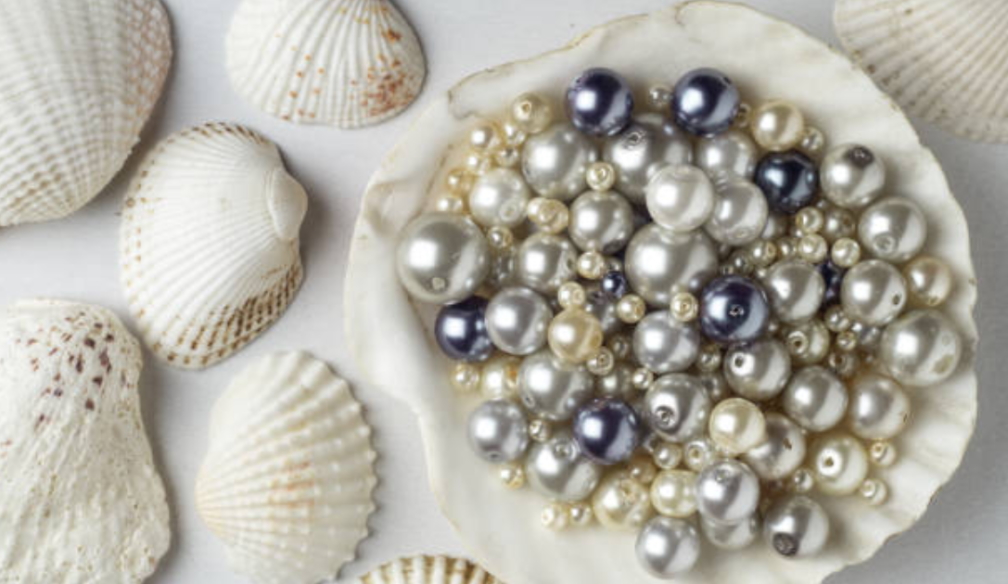The Beauty of Pearls
- Written by NewsServices.com

The pearl stone is a beautiful gem that has many different meanings and symbolism attached to it. It is said to represent wisdom, purity, and truth. It is also a popular birthstone for June.
A pearl is a hard, round object that is produced by a living creature, usually a type of mollusc or oyster. It is made up of many layers of nacre, or mother-of-pearl.
The value of a pearl or Perla depends on its size, colour, and lustre. The most valuable pearls are those with a bright white colour and a high level of lustre. Pearls come in many colours, including white, black, pink, and cream. The rarest and most valuable pearls are those with colours that are not found in nature, such as blue or purple.
Pearls have been treasured for centuries and were once only affordable to the very wealthy. Today, pearls are more affordable and can be found in many different types of jewellery.
The Value of Pearls
There's something about pearls that has captivated people for centuries. Maybe it's their glossy sheen or the way they look like delicate orbs of light. Or perhaps it's the way they've been revered by royalty and society's elite throughout history. Whatever the reason, pearls remain one of the most popular gemstones today.
The value of a pearl is determined by some factors, including its size, colour, and lustre. The most valuable pearls are those with a creamy white hue and a high level of lustre. The largest and most perfect pearls are also the most valuable.
Natural pearls are incredibly rare, which contributes to their high value. Most pearls on the market today are cultured, meaning they're grown in oysters or mussels on farms. Cultured pearls are more affordable than natural ones, but they still hold a fair amount of value.
If you're thinking about purchasing pearl jewellery, it's important to do your research beforehand. Make sure you're buying from a reputable source and that the pearls you're getting are genuine. Once you have your beautiful new pearl jewellery, enjoy wearing it and knowing that you have something truly precious in your possession!
How are Pearls Formed?
A pearl is formed when an irritant, such as a piece of sand, gets inside the shell of a mollusc. The mollusc then secretes nacre, a substance that coats the irritant and slowly forms a pearl. Depending on the type of mollusc, pearls can be either wild or cultured.
Wild pearls are very rare and are typically found in oysters that live in warm waters. Cultured pearls are more common and are grown in pearl farms. In both cases, it takes several years for a pearl to form.
The quality of a pearl is determined by its size, shape, colour, lustre, and surface quality. Wild pearls tend to be small and irregular in shape while cultured pearls can be larger and more symmetrical. The colour of a pearl depends on the water where it was formed as well as the type of mollusc. Pearl lustre is created by light reflecting off the many layers of nacre coating the irritant inside the shell. And finally, surface quality is judged by how free the pearl is from blemishes such as scratches or cracks.
The Types of Pearls
There are many types of pearls, each with its unique beauty. Here is a brief overview of the most popular types:
Akoya Pearls: These classic white pearls are grown in the Akoya oyster, which is native to Japan. Akoya pearls are typically round in shape and range in size from 2-10mm.
Tahitian Pearls: Tahitian pearls are grown in the black-lipped oyster, which is found in the waters around French Polynesia. Tahitian pearls come in a wide range of colours, from light pink to dark black, and they often have an iridescent sheen. They typically range in size from 8-16mm.
South Sea Pearls: South Sea pearls are grown in the silver-lipped or gold-lipped oyster, which is native to Australia, Indonesia, and the Philippines. South Sea pearls can be white, cream, or gold, and they often have a very high lustre. They typically range in size from 10-20mm.











